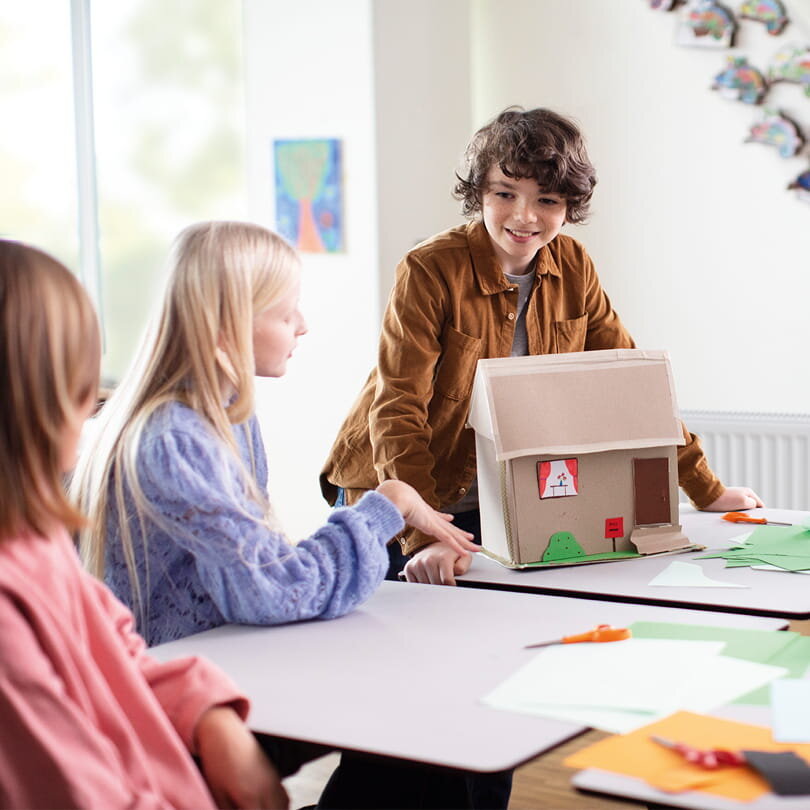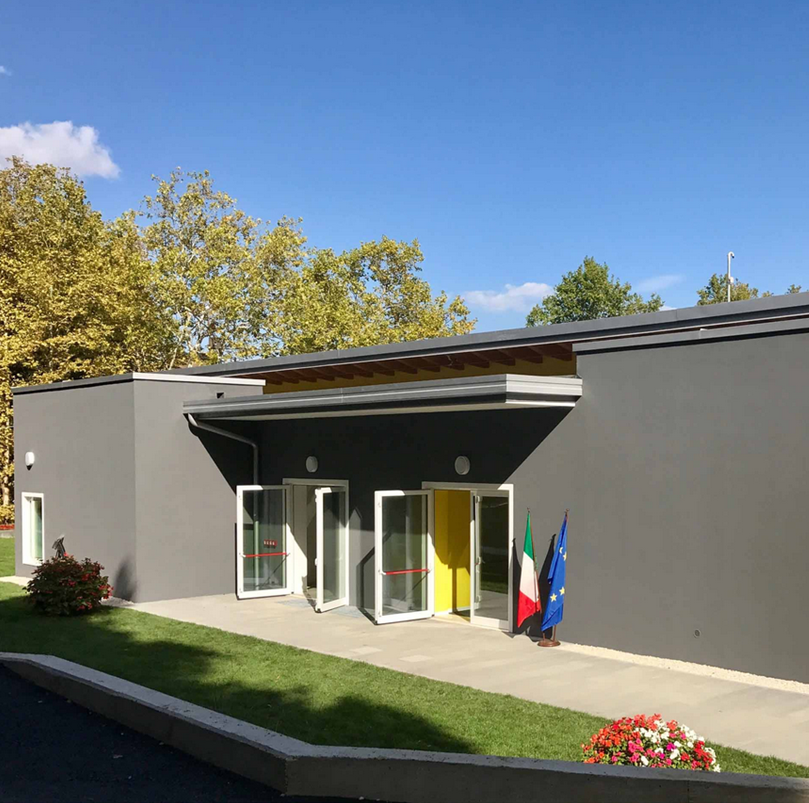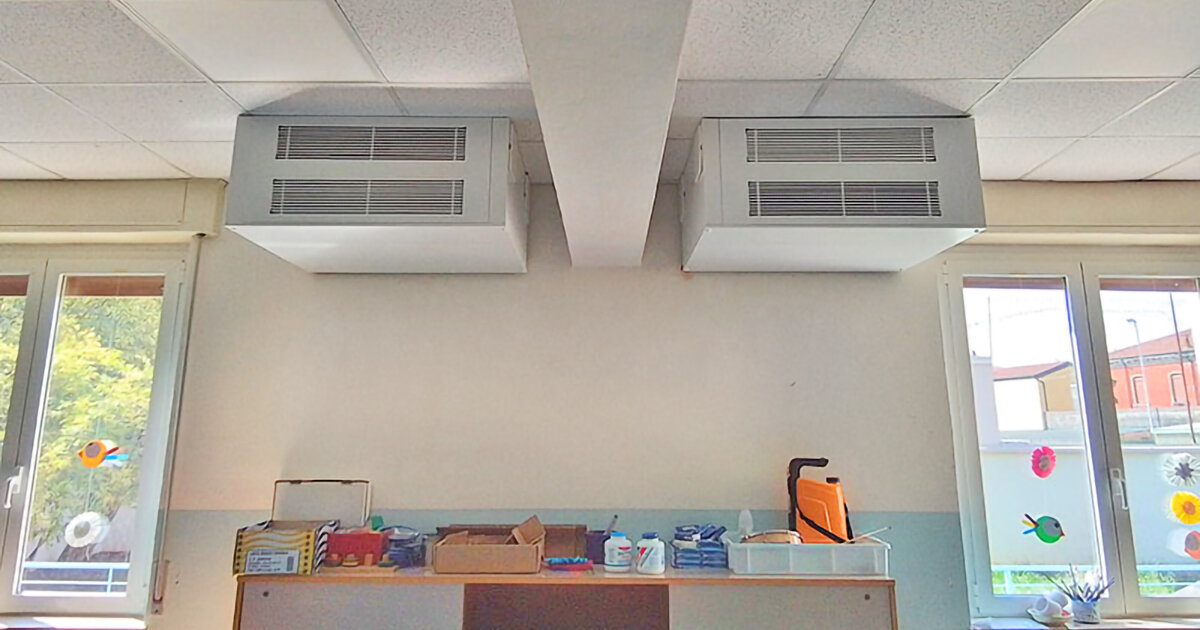Ensuring good environments to learn
Poor indoor air quality, drafts, and changing cold or heat are well-known problems in classrooms. These issues have been affecting learning outcomes, daily comfort, and students' health worldwide for years.
The best way to reduce the risk of COVID-19 spreading inside of schools has been a hot topic in recent months, but only recently has the conversation started to center on a method that can make a real difference in this regard: controlled mechanical ventilation.
Classroom air quality demands expert care!

Heating, cooling and ventilation in schools
Schools, universities, and other learning environments require heating and cooling systems that are energy-efficient, silent, and have quick response times for the thermostat. In terms of heating, a school building is quite active. Therefore, the heating system must react quickly to daily use, vacant rooms at night and on the weekends, and high and fluctuating heat loads during the week.
Keeping a classroom cool can also present a challenge. Window ventilation should be used whenever possible, for example, during breaks when mechanical ventilation is unavailable. However, window ventilation doesn’t provide sufficient cooling and efficiency in hot outdoor conditions. In this case, mechanical cooling is required. The demand for cooling power is very high in classrooms, with up to 200 W per m2 of floor area.
In addition to heating and cooling, proper ventilation is also essential in schools. Ventilation or fresh outdoor air is required in any classroom. High carbon dioxide levels affect concentration and learning ability. Moreover, humidity increases with the moisture supplied from the outside air. Because of the moisture load caused by human respiration and perspiration - 30 people produce about 1.5 l/h of water vapor - moisture should be removed by ventilation or dehumidification.
Adequate ventilation can only be achieved with mechanical systems. These include mechanical or bidirectional ventilation and mechanical exhaust or unidirectional ventilation. We are trying to minimize heat losses and save on high heating costs by installing airtight windows. However, having an airtight building also costs as we often miss fresh air. This is especially true in many older school buildings, which rely on so-called natural ventilation by opening the windows.
Solutions
The evolution of the climate and the trend towards energy-saving are also imposing climate systems in schools. Therefore, the school heating solution should suit summer and winter services. Indoor air quality (IAQ) is a critical parameter, especially given the practical implications that pollutants and allergens can have on children, who are more vulnerable because of an immune system that is not yet able to respond to external attacks adequately.
Good habits are beneficial but not sufficient; installing suitable Controlled Mechanical Ventilation systems is the optimum answer for renewing and purifying the circulating air while always ensuring the highest quality.
However, separating new school building construction from restructuring and regulatory adaption of existing school buildings is critical.

Construction of new school buildings
In the case of new buildings, the ideal solution is certainly radiant heating and cooling systems, in most cases installed on the floor.
The proper design of this system, with the corresponding calculation of humidity control systems, allows maximum comfort, evenly distributed throughout the surface, even during the summer period.
As is well known, the underfloor system operates at relatively low temperatures, allowing heat pumps' efficiency, combined with photovoltaic systems, to be fully exploited to ensure minimal consumption throughout the year.
Also, in the case of a new building, the air exchange must be carried out with a ducted system and a high-efficiency heat recovery unit.
This system ensures that the energy (warm in winter and cold in summer) in the outgoing air is transferred to the inlet air through thin membranes that prevent the two air flows from mixing.
Renovation of existing school buildings
The school context, now stabilized for decades from an architectural point of view, represents the main constraint to the appropriate technical solutions and often requires the search for valid alternatives to the usual installation methods.
Generators are, in most cases, boilers that reversible heat pump water chillers can replace by exploiting, if possible, the same thermal power stations or by finding suitable outdoor spaces to install the new units. For example, fancoils that are often unsuitable for cooling should be replaced with modern, quiet models equipped with brushless motors, evaluating the best solution for condensate drainage in the case of both fancoils and ducted air handling units.
The benefit of this intervention is better air quality combined with improved comfort, particularly in the early and late months of the school year, when cooling is needed. In the case of school building renovations, the most straightforward and most economical solution for air exchange is represented by punctual, decentralized systems.
These are individual devices that can be installed by making a simple hole in the wall, which work by alternating the expulsion of stale air and the input of clean air in each room, recovering the energy (cold in summer and warm in winter) contained in the air thanks to a ceramic element capable of retaining and releasing the energy itself.
Discover our new dual-flow punctual CMV unit, Recupera ONE-60!
Interview with an expert
Luca Ceriscioli, Marche (Italy) Region President from 2015 to 2020
Emmeti (a commercial brand of Purmo Group) played an active role in the reconstruction work of the Benedetto Costa Children School, which was hit by a severe earthquake in 2016.
The smile of the children who attended the new "Benedetto Costa" Children School of Sarnano was the best image to represent the return to normality and tell the strength of a wounded community that gets up repeatedly. The inauguration of this school, yellow and solar, was a beautiful moment that showed how it was possible to rebuild and return to life among endless difficulties, starting from the most cherished places, those dedicated to the young generations, as the beating heart of social life. The school building, made in record time, reference model for public works, was designed with forefront anti-seismic criteria, in a sustainable way from the environmental point of view and an example of self-sufficiency from the energetic point of view.
Energy efficiency in school reconstruction
On 24th August 2016, the center of Italy, in particular the province of Macerata (Marche Region), was struck by an earthquake.
In the Autonomous Region Friuli Venezia Giulia, where Emmeti is headquartered, reconstruction work of the Benedetto Costa Children's School immediately started, with Emmeti playing an active role.


CMV in school buildings
Controlled Mechanical Ventilation ensures a constant supply of fresh, clean air inside classrooms and prevents the accumulation of carbon dioxide, moisture, and contaminants in the air.
The new system at the Aldrighetti Preschool in Verona will allow all its guests to enjoy a healthy and comfortable environment for all educational and recreational activities.
Go to the news



